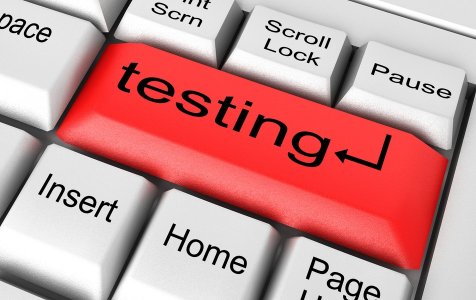You can conduct End-to-end (E2E) testing in 6 simple steps. But before that, let’s cover what it is.
What is end-to-end testing?
End-to-end testing is the final step of the software development process. The process checks the usability of the software from the user’s perspective.
Stats
35% of businesses hire non-testers with no background to test expensive software. One of the reasons why software failure is quite common. In 2017, a software failure incurred $1.7 trillion in financial losses because it wasn’t tested well.
So it makes sense to have a reliable testing team that follows standard procedures while testing software.
Step-By-Step Guide
Here’s how you can test any software.
Step #1: Review requirements
Begin with understanding how software should behave. Try to figure out the purpose of it and what it’s trying to fulfill. You must put yourself in the user’s shoes and verify the requirements.
You can do this by developing the testing conditions from real-time scenarios.
Define these specifications early on:
- Stages of testing
- Quality of testing scenario descriptions
- Complexity of the software
- Risk attached to the system
- Relationship between product to be tested & testing technique
The step identifies and eliminates problems at the primary stage.
Step #2: Build test design
Now you need a detailed test design to check the accuracy of the test results.
Test design will evaluate data and give in-depth test scenarios to you. It will also predict possible errors.
The process will also define the testing structure and determine how the test goes.
Check out some of the test design techniques:
- Equivalence Class Testing
- State Transitioning
- Exploratory Testing
- Boundary Value Analysis
- Error Guessing
So, after you’ve decided to go with a technique, don’t forget to study the software & hardware specifications.
Step #3: Define processes
The test designing part is done.
Now, define the processes by noting down a few questions:
- How do the systems and associated sub-systems work?
- What is their ideal response?
- What are the integrated processes?
- What are the standard descriptions?
- What are the roles & responsibilities of each system & sub-system?
Step #4: Outline the testing framework
Now determine the testing framework. The testing framework is the combined structure of standard processes & tools that are used to design test cases.
It gives testing guidelines, enhances test performance, increases test speed and reduces maintenance costs.
You can choose a testing framework from these:
- Record-and-playback
- Modular-Based Testing
- Library Architecture Testing
- Data-Driven
- Keyword-Driven
- Hybrid Testing
You can also choose the combination of these frameworks for testing. Just verify their flexibility and adaptiveness to our process.
Step #5: Design the test case
Now the next step is designing the test case.
The test case is like a test scenario that measures workflow across the specifications like inputs, conditions, procedures & expected results.
You’ll learn if the software is up to the mark. Is it living up to the expectations?
Here’s how you can design the primary test case:
- Title
- Description
- Precondition
- Assumption
- Test steps
- Result
Step #6: Run tests & observe
You’re not done yet!
The next in the hunt is to create the test run.
Before you run the test, consider these questions:
- Who will take the test?
- When to perform the test?
- Which cases to select?
Now, you’re ready to create the test run and document the input and output data.
Finally, you can run the test, record, and evaluate the results. And there you’re! Test completed.
Final Takeaway
If you test your product well, you can launch them successfully in the market without fear of it getting broken. Every step demands expertise and diligence. Don’t skip the testing process to cost-cut costs because not having it at all may cost you more in the later run.
